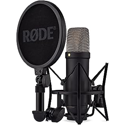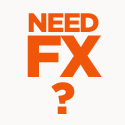European Stations Brace for the Disappearance of FM Radio in Car
The audio quality offered by Dab + car radios far exceeds that of frequency modulation, for cleaning the sound and the absence of interference, characteristics that make it ideal for listening in the car (digital transmission has no middle ground: it returns crystal clear audio or you don’t listen to anything, as for TV, where the old “lines” disappeared). But this does not mean that this transmission system can quickly replace the FM: the “techno-enthusiasts” are already counting down to embrace a technology that is not so new: it dates back to the Eighties, the first one was activated in 1995 in Norway and the Dab + in 2007, a technological evolution that exploiting more efficient compression algorithm increases the number of programs broadcast in high quality on a single channel from 8 to 12. We must deal with the spread of receivers, which is still limited, the fact that in mountainous areas the signal “bounces less”, therefore a greater number of repeaters is needed; for Italy there is also the lack of frequencies , and if the transition is imposed quickly it is not said that everything runs smoothly.
In Norway, for example, listening to the radio and advertising revenue paid the price; still there are local broadcasters that broadcast in FM (and not a few on their site claim to be proud of it) while others have accepted the challenge with national networks by opening one or more digital channels to also guard the new band. Yet the Scandinavian country had been a pioneer in the DAB (turning on the first transmitter almost 25 years ago), so much so that it had programmed the “switch-off” (so called because it implies turning off the transmitters) by the end of 2017. Digital made savings (especially on state radio, with many channels) because a single transmitter could now carry 12 high quality signals.
The next is Switzerland, which will complete the transition at the end of 2024 (state radio seems to want to anticipate it in mid-2022). But the transition could be less traumatic: compared to Norway the surface of the country is about a tenth, so it will be less expensive to send a good signal to all areas (one of the complaints of Scandinavian listeners); in addition, the broadcasters were financially supported (by diverting resources from the radio and television license fee) to allow publishers to activate a digital channel by 2019. And then in Switzerland the first digital transmissions began in 1999 and 92% of new cars have the standard Dab + tuner. And if the Confederation (as it promised) will carry out advertising campaigns to invite citizens to “equip themselves” for the change of standards, the initiative could be successful. The Swiss are accurate, aren’t they?









